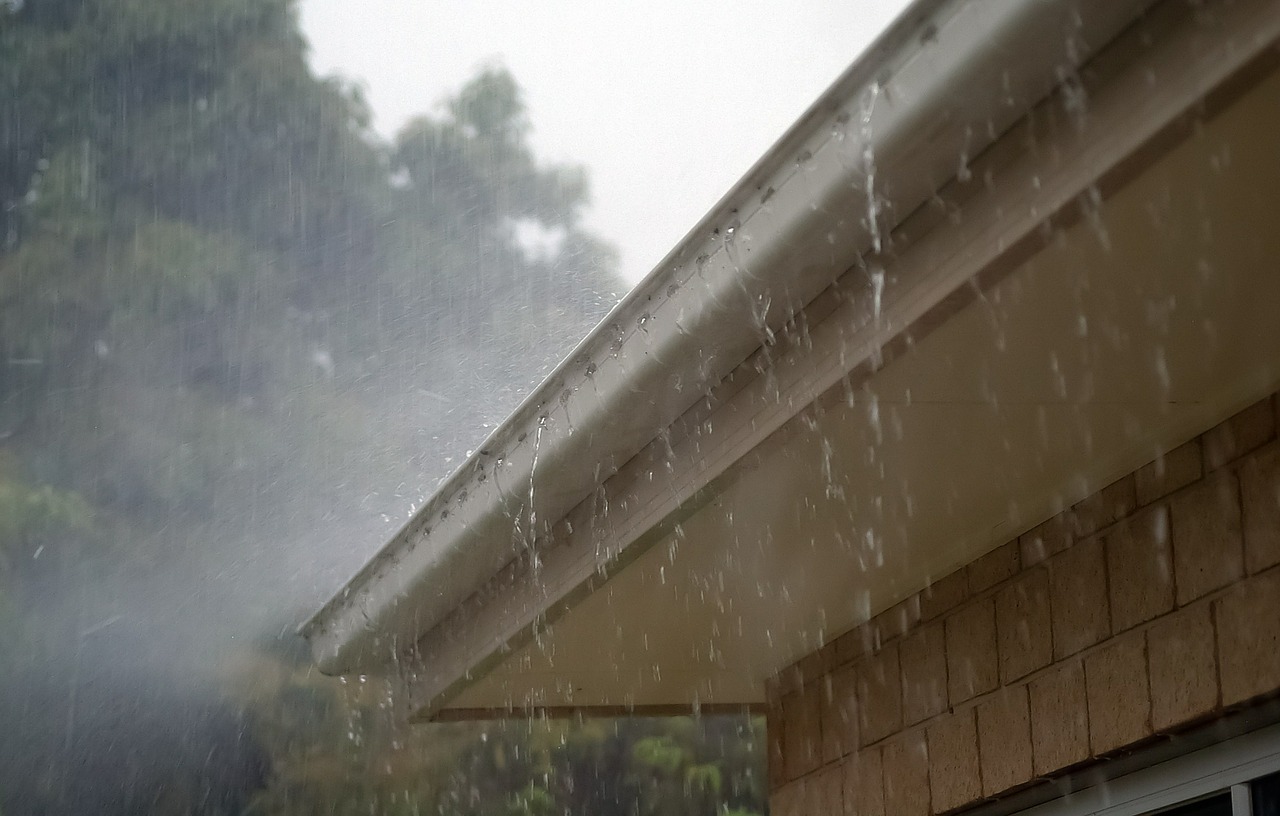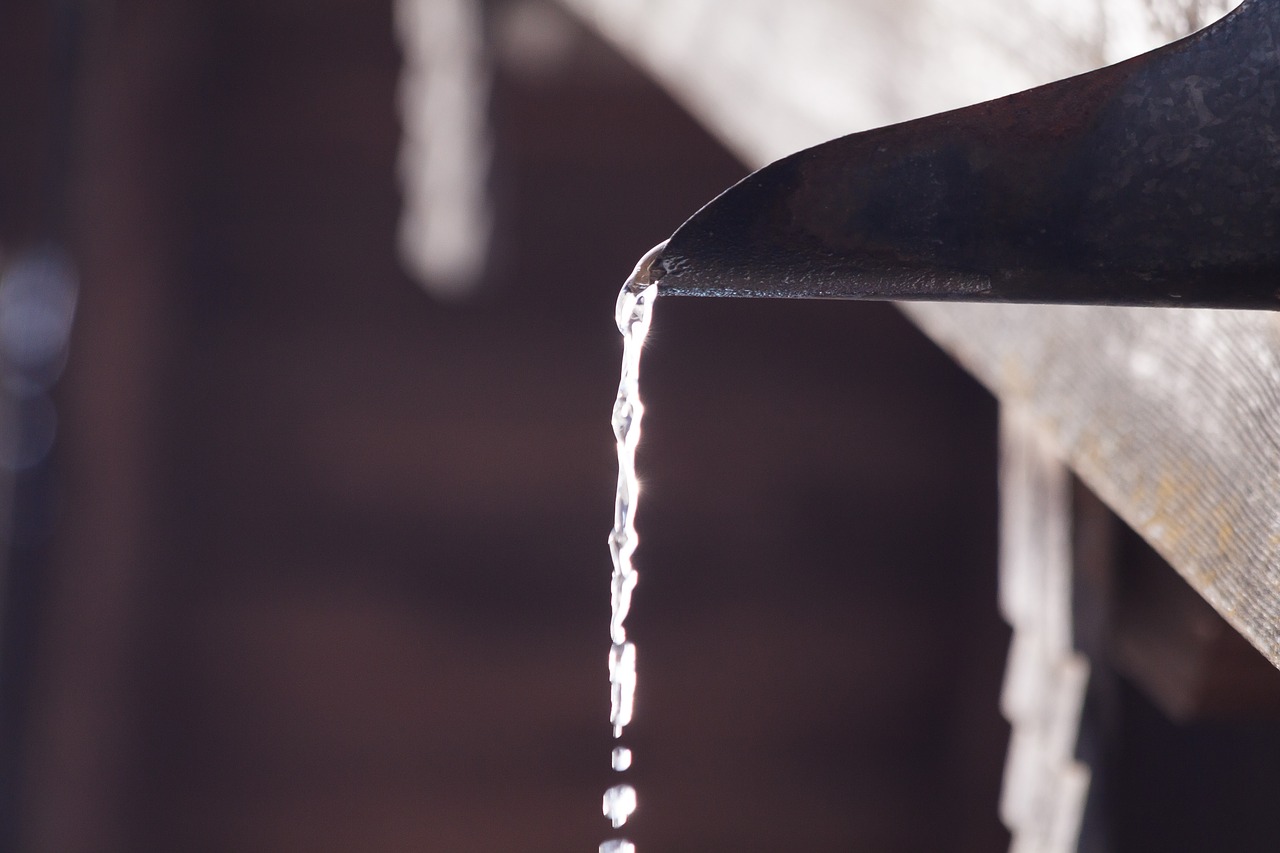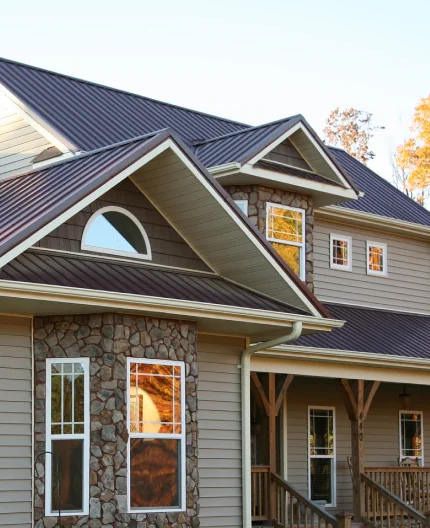What are Gutters For?
Published on Thursday April 19, 2018
The purpose of gutters on a house are to protect it from rainwater. Gutters work by diverting water away from your home and its foundation. When your gutters are removed, damaged or obstructed, that water must go somewhere — and, given the opportunity, water can ruin virtually any part of your home.
Why do I need a gutter system?

Gutter systems reduce water and moisture damage to homes. But why? Won’t that water just roll off my roof? Problem solved, right?
Wrong — that’s actually part of the problem:
Modern homes are designed to conserve or “trap” energy. That’s good. But in the process, such homes can also trap moisture and that can cause big problems and costly damage.
For example, if the soil around the foundation is soaked from roof drainage water, we can assume that at least some of that moisture will find its way into the basement, crawl space or the concrete floor. Some of this moisture will then be absorbed by the air in the home.
If this occurs in the winter time, we can assume that the warmed air in the home will absorb a great deal of moisture (warm air can absorb more moisture than cold air).
If this moisture saturated air finds itself into some spaces with cold surfaces — and it will, then some of this moisture will condense against these cold surfaces…Condensation at windows may just be bothersome, but in attics and walls it can cause fungal wood-rot and that can be very expensive to repair.
A functional gutter system prevents:
- Water damage to your roof, causing rot, deterioration or mold in shingles, soffit, fascia and masonry
- Moisture in windows, creating condensation or damage sills or interior walls
- Water along the foundation, spurring erosion, damage your foundation or basement flooding
What if it doesn’t rain much in my city?
Do you live in Las Vegas? Bakersfield, California? Winslow, Arizona? Reno? Phoenix?
If not, you probably need gutters.
Long Home Products took a look at four major metro areas — let’s see how much precipitation falls each year (from USClimateData.com):
- Baltimore, Maryland: 40.7 inches
- Washington, D.C.: 40.8 inches
- Richmond, Virginia: 43.3 inches
How do gutters work?
Your roof protects your home from the rain by shedding rainwater to the gutters.
Gutters are the horizontal metal (usually aluminum) part of the system that are usually installed along the eave edges of your roof, or along roof features like dormers. Gutters are open at the top to catch rainwater flowing off the roof, directing it into the downspouts.
Downspouts are the vertical, closed sections of the gutter system that direct the water from the roof to ground level. Your drainage system guides the water away from your home’s foundation.
How do I take care of my gutter system?

Clean and inspect your gutter system at least once a year. Most professionals recommend fall as the best time for gutter maintenance. Depending on the number of trees near your home, you may need to clean your gutters more often.
How to clean your gutter system:
At a minimum, you’ll need:
- A ladder
- A bucket
- A gardening trowel or hand shovel
- Gloves to scoop out leaves and debris in the gutters
Inspect for leaks while cleaning your gutter system. Gutter seams and joints are where leaks are most likely to start (especially on older gutter systems).
Newer gutters are usually made from solid sections to minimize potential for leaks. Inspect the joints and look for damage from squirrels or storms. If you notice a leak, make a short-term repair with gutter-sealing spray or caulk. Have a professional complete an inspection to make sure there aren’t any additional problems.
Keep that water away from your house!
Even if your gutters are in full working order, water from downspouts must be directed away from your foundation. Water can crack and crumble your foundation and cause major structural damage.
Two common DIY solutions are:
- Downspout extenders: Extend your downspouts four to eight feet away from the foundation to keep water flowing away from your house. Downspout extenders are very affordable and can be bought at any hardware store. They might not be an option in neighborhoods where homes are close together.
- Rain barrels: An eco-friendly, space-saving option. Prices for rain barrels typically range from $30 to $100, depending on size and style.
When is it time for a gutter system upgrade?
If your gutters are sagging, leaking, or visibly damaged and your downspouts are broken or missing, it’s time to think about gutter replacement.
Roofing professionals evaluate the condition of your gutter system during a roof replacement because that’s one of the most convenient times to update your gutter system.
There are a number of gutter system options. Your installer will calculate the sizes that meet the needs of your home.
Types of Gutter Systems
Most gutters installed today are seamless (also called roll-formed) aluminum K-style gutter that won’t rust or leak and are formed in one continuous piece on-site.
Copper is another option that is usually reserved for historic or high-end homes. It has a unique period look that comes at a much higher price.
Steel and vinyl are less popular because they eventually rust and crack, respectively.
For extra protection, add screens, filters, or guards to your gutter system. Each prevents gutters from clogging with debris and to minimize gutter maintenance.
Remember: don’t wait to make gutter system repairs! Your gutters protect your home from water damage at a minimal cost. Make the gutter system part of your annual or semi-annual home maintenance plan.
Let’s talk roof replacement.
Need a new roof? Contact Long Home Products online today to get a free quote on your roof replacement and learn more about our industry-leading 50-year, transferable warranty.
Interested in Long Home Products?
See our special offers now.
*Excludes labor. Subject to credit approval.
**Excludes labor. Subject to credit approval.
One-day installs contingent upon municipal rules and regulations.
By submitting a form, I authorize Long Home to contact me with information about its products and services via mail, email, phone and/or text at the contact information provided, even if I am on the national do not call list. Long Home may use automated telephone technology to initiate calls to its customers. Calls and in person estimates may be recorded for quality and training purposes.








